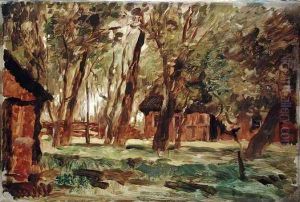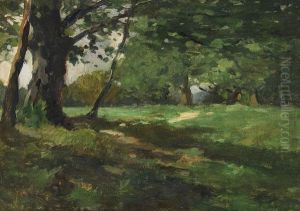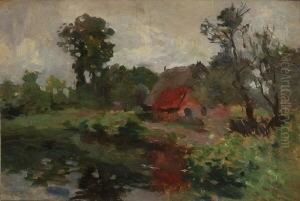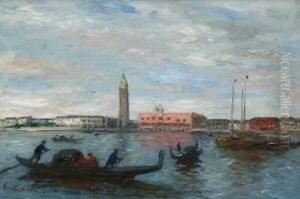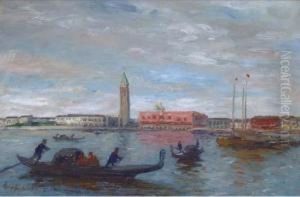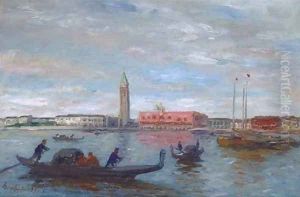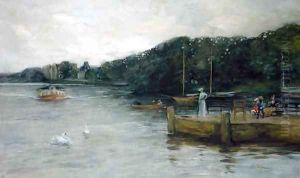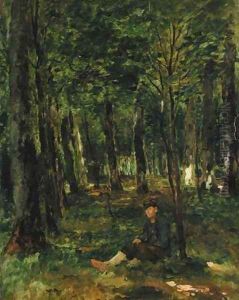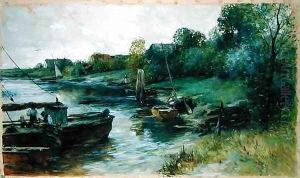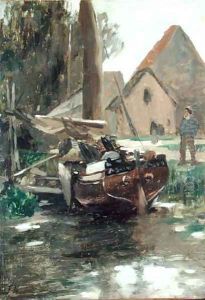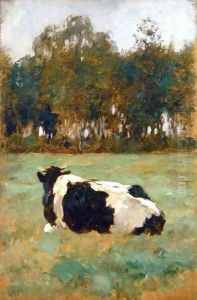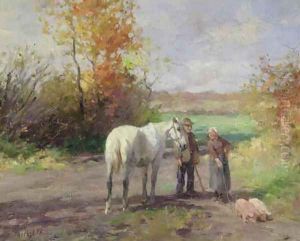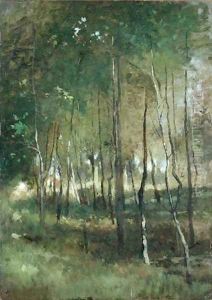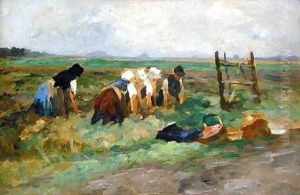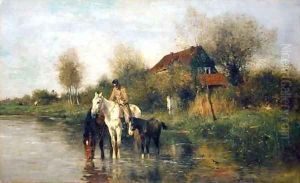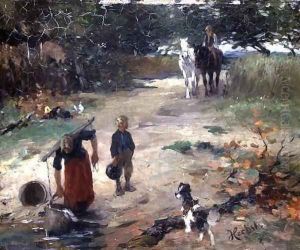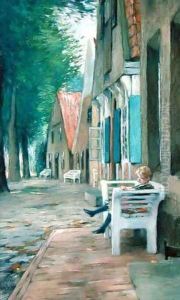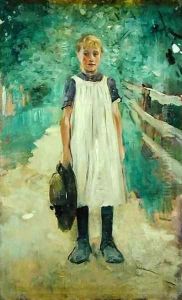Thomas Ludwig Herbst Paintings
Thomas Ludwig Herbst was a German painter born on November 8, 1848, in Hamburg. He is best known for his contribution to the Hamburgischer Künstlerclub (Hamburg Artists' Club) and as one of the leading figures in the Hamburg Impressionist movement. Herbst studied under various artists in Düsseldorf, Weimar, and Paris, where he was influenced by the Barbizon school and later by Impressionism.
In the early stages of his career, Herbst predominantly painted landscapes and animal portraits, developing a distinct style characterized by a naturalistic approach and a keen interest in light effects, which became more pronounced under the influence of French Impressionism. His works often depicted the countryside and rural life, highlighting the simple beauty of nature through a vibrant palette and loose brushwork.
Herbst's participation in the Hamburgischer Künstlerclub was significant, as he, along with other members such as Paul Sérusier and Fritz Overbeck, created a community that fostered artistic exchange and innovation. The club was instrumental in promoting Impressionism in Germany and in challenging the academic art conventions of the time.
Throughout his life, Herbst remained connected to his hometown of Hamburg, where he actively participated in the local art scene. Despite facing criticism from conservative circles for his impressionistic tendencies, he continued to exhibit his work and gained recognition among art enthusiasts and collectors.
Thomas Ludwig Herbst's legacy is that of a pioneering artist who embraced the new artistic trends of his time and helped to lay the groundwork for modern art in Germany. He passed away on October 28, 1915, leaving behind a body of work that continues to be appreciated for its contribution to German Impressionism.
